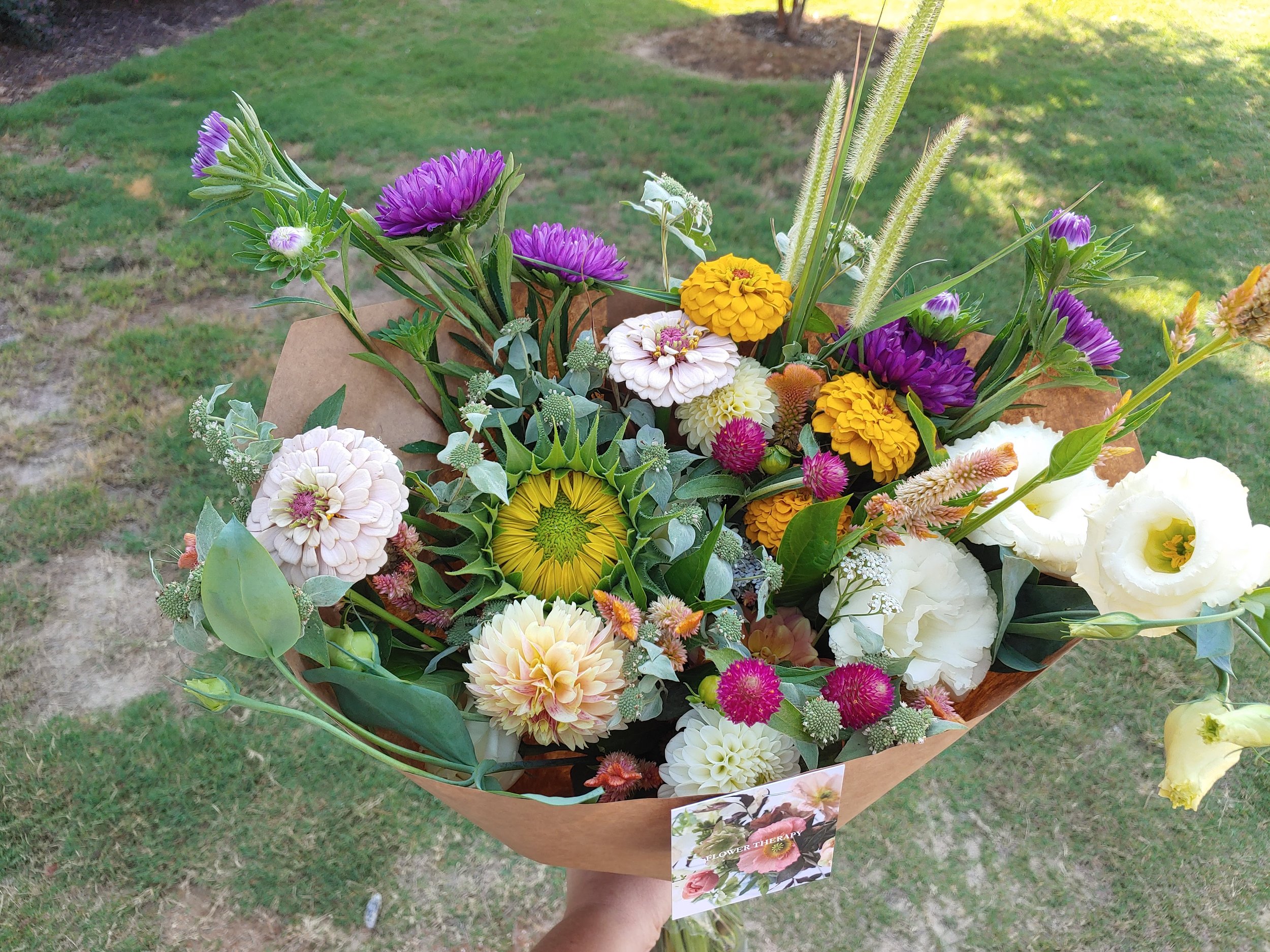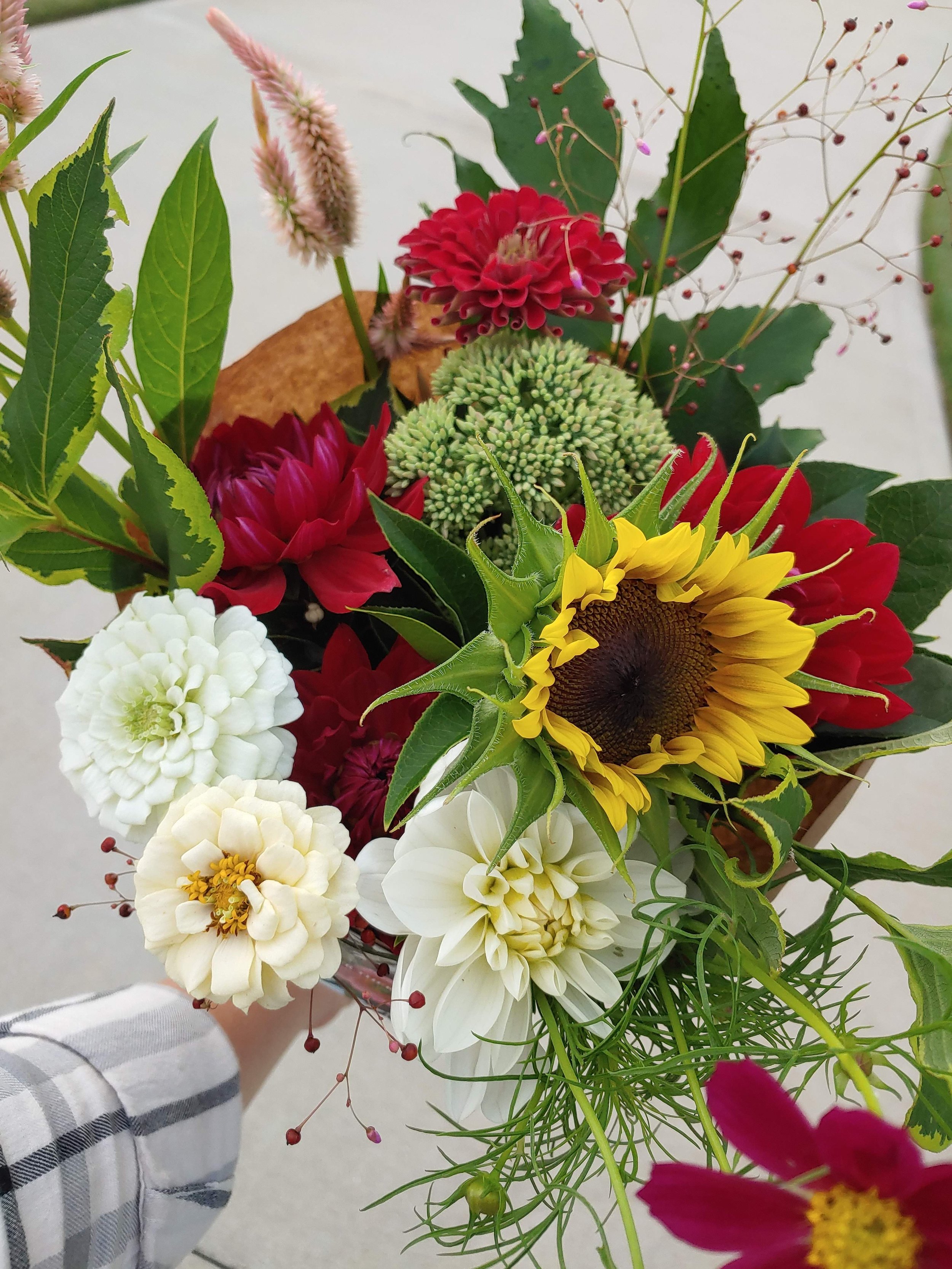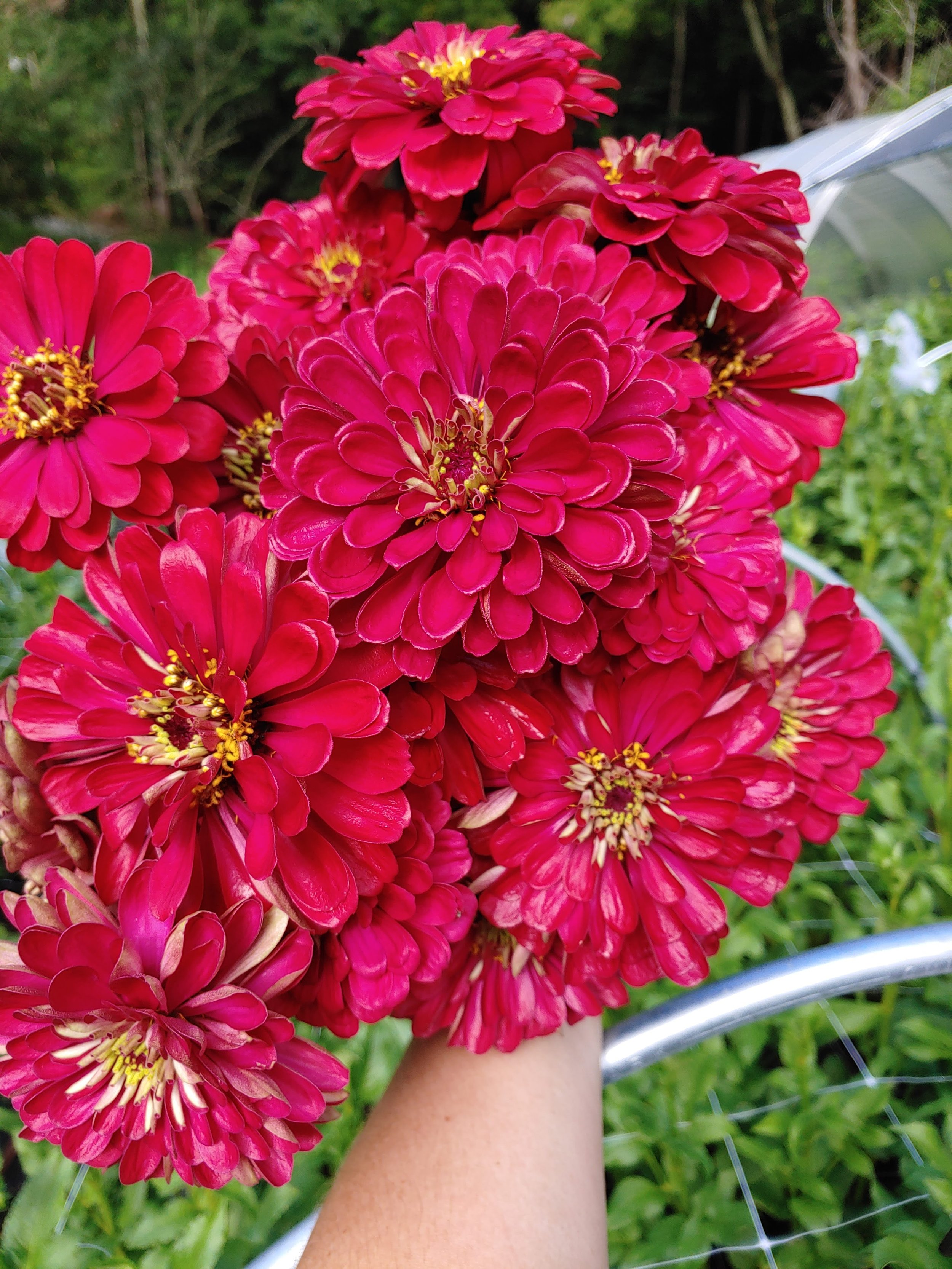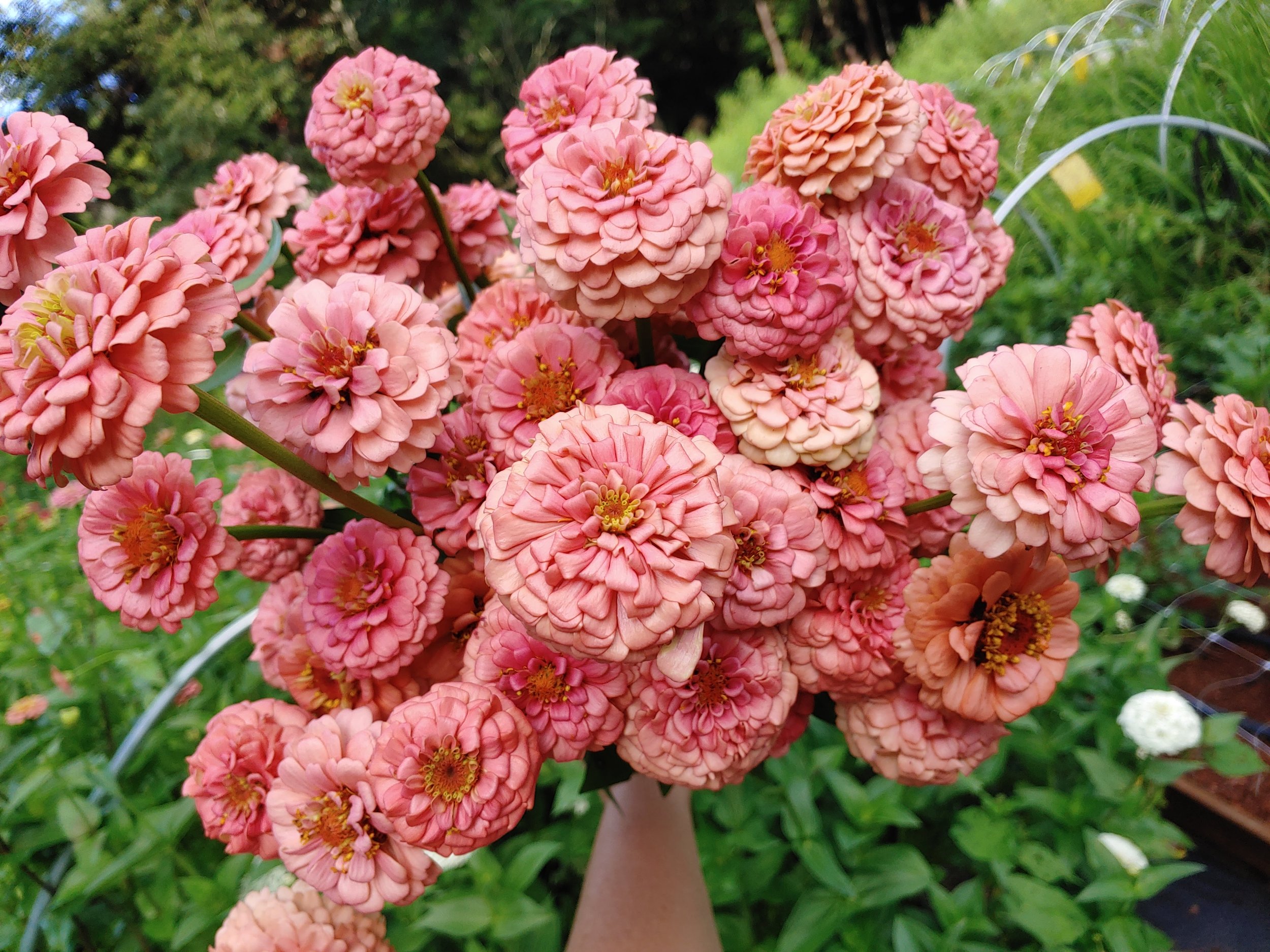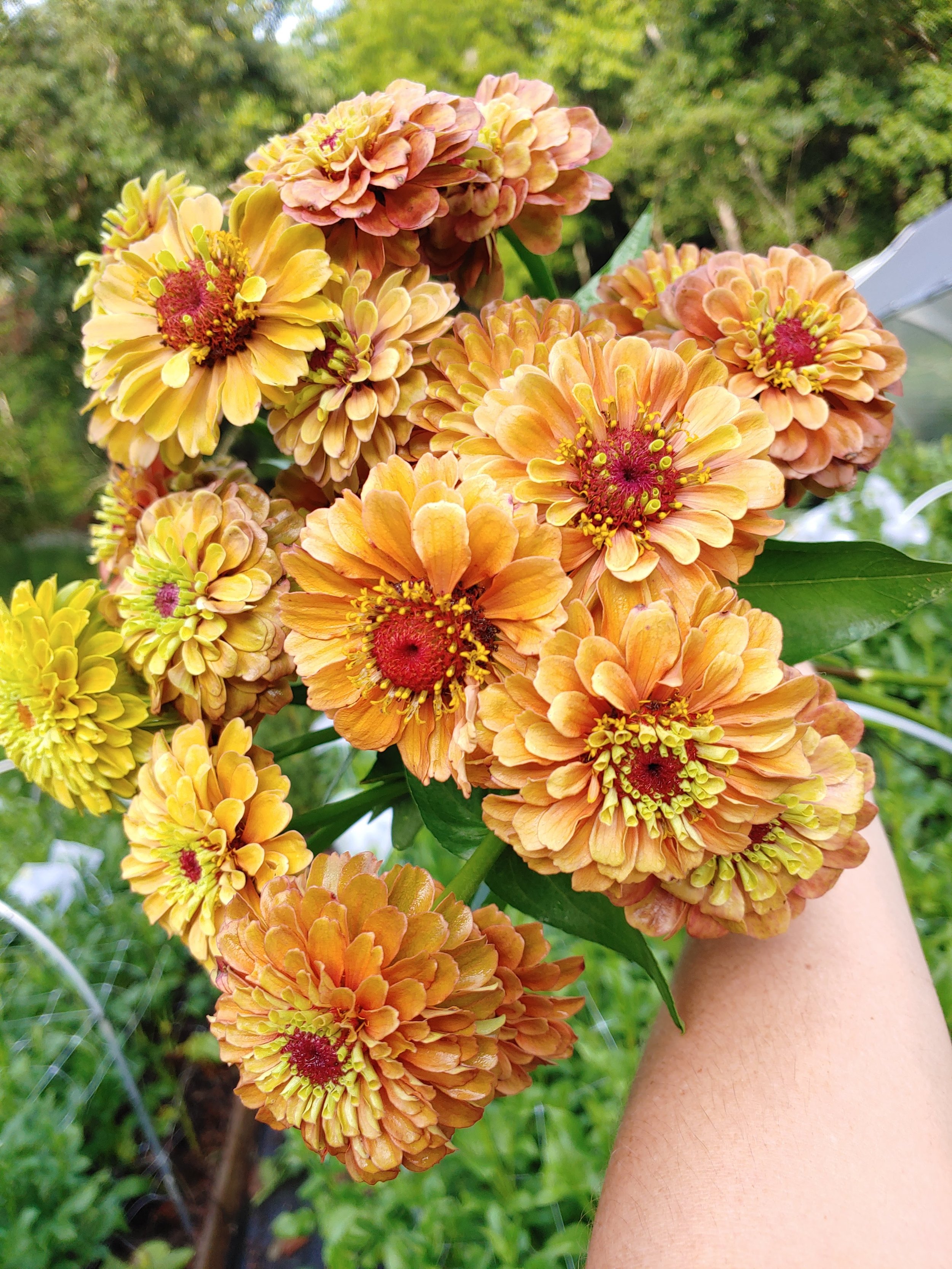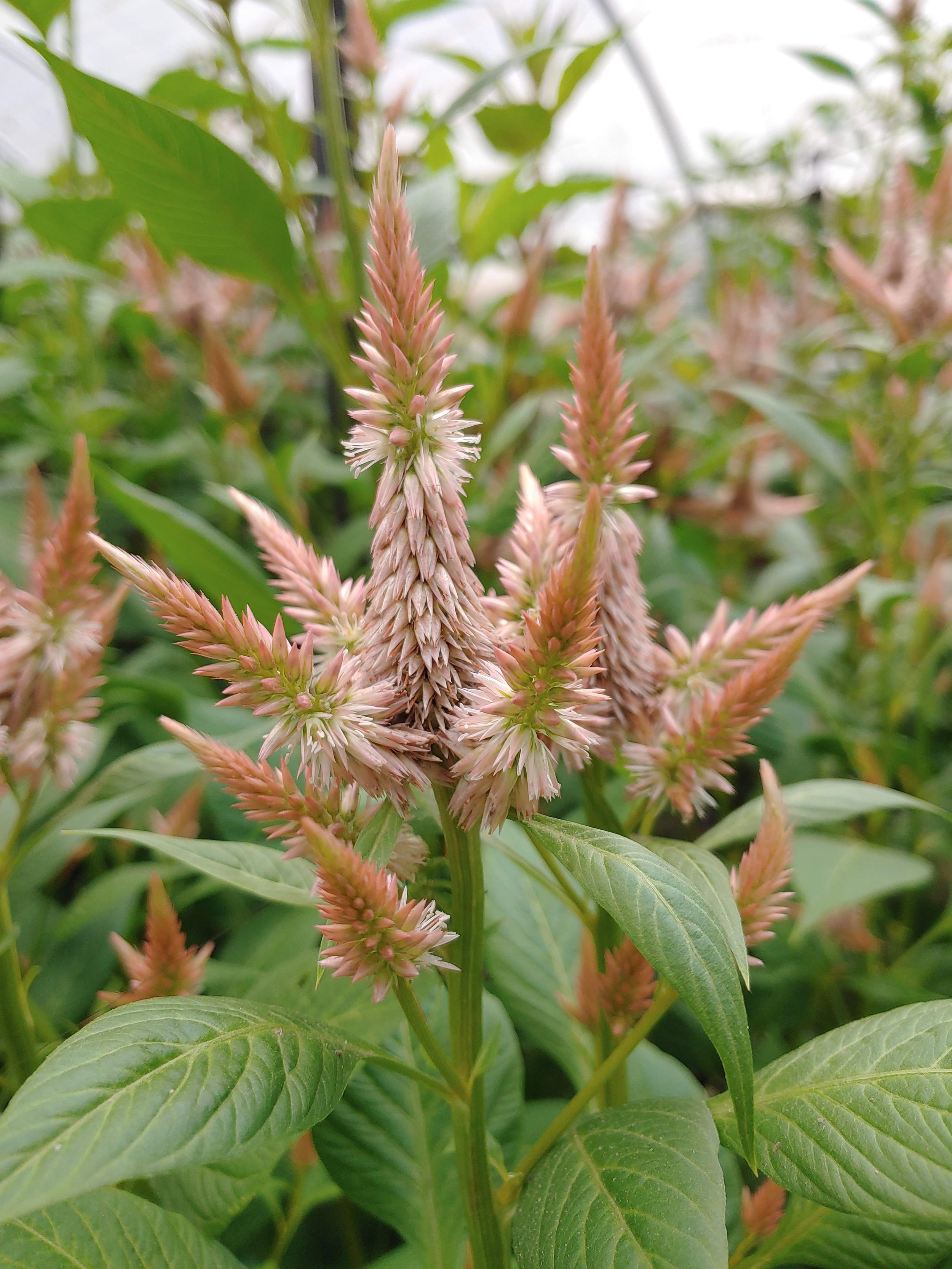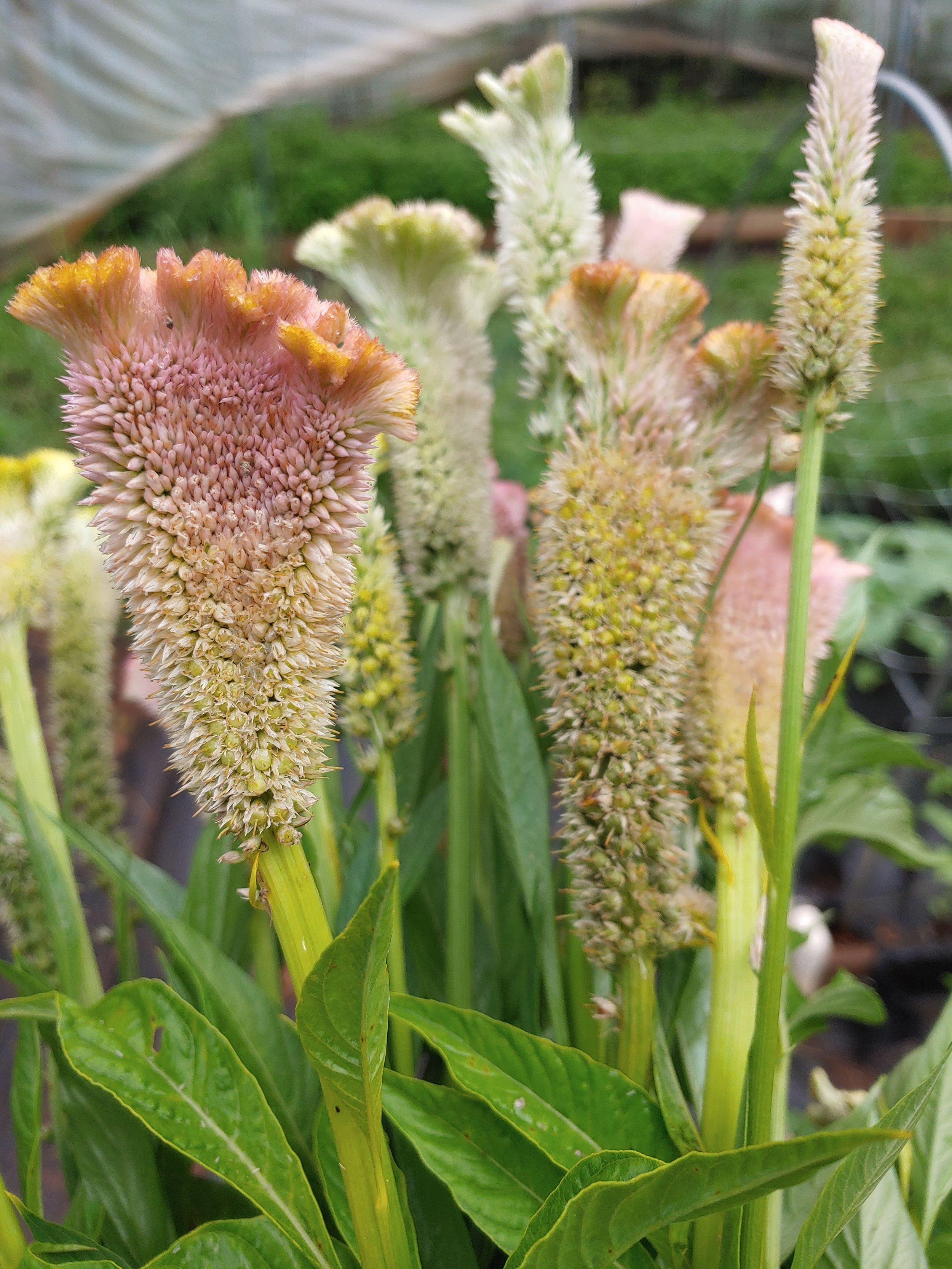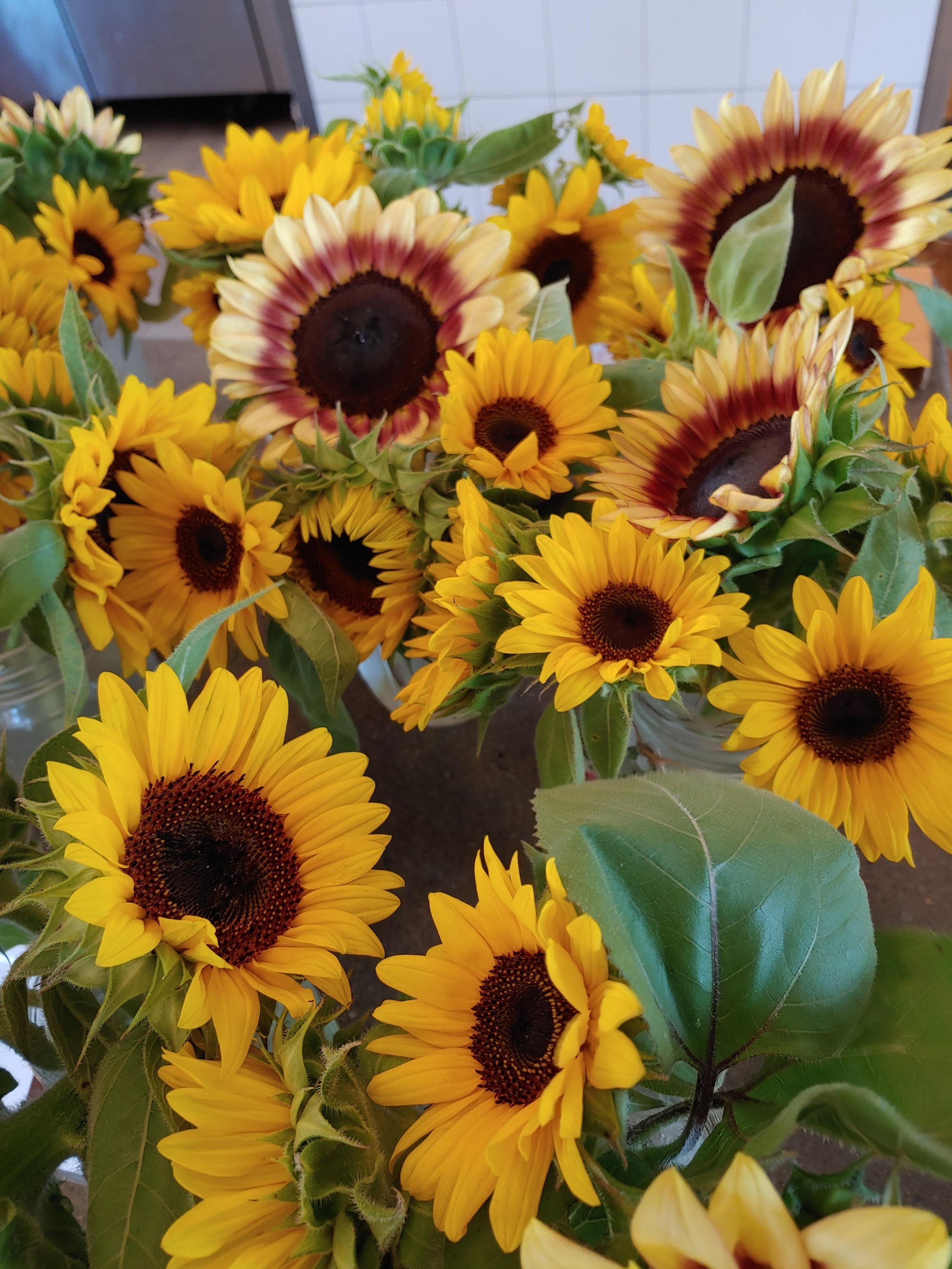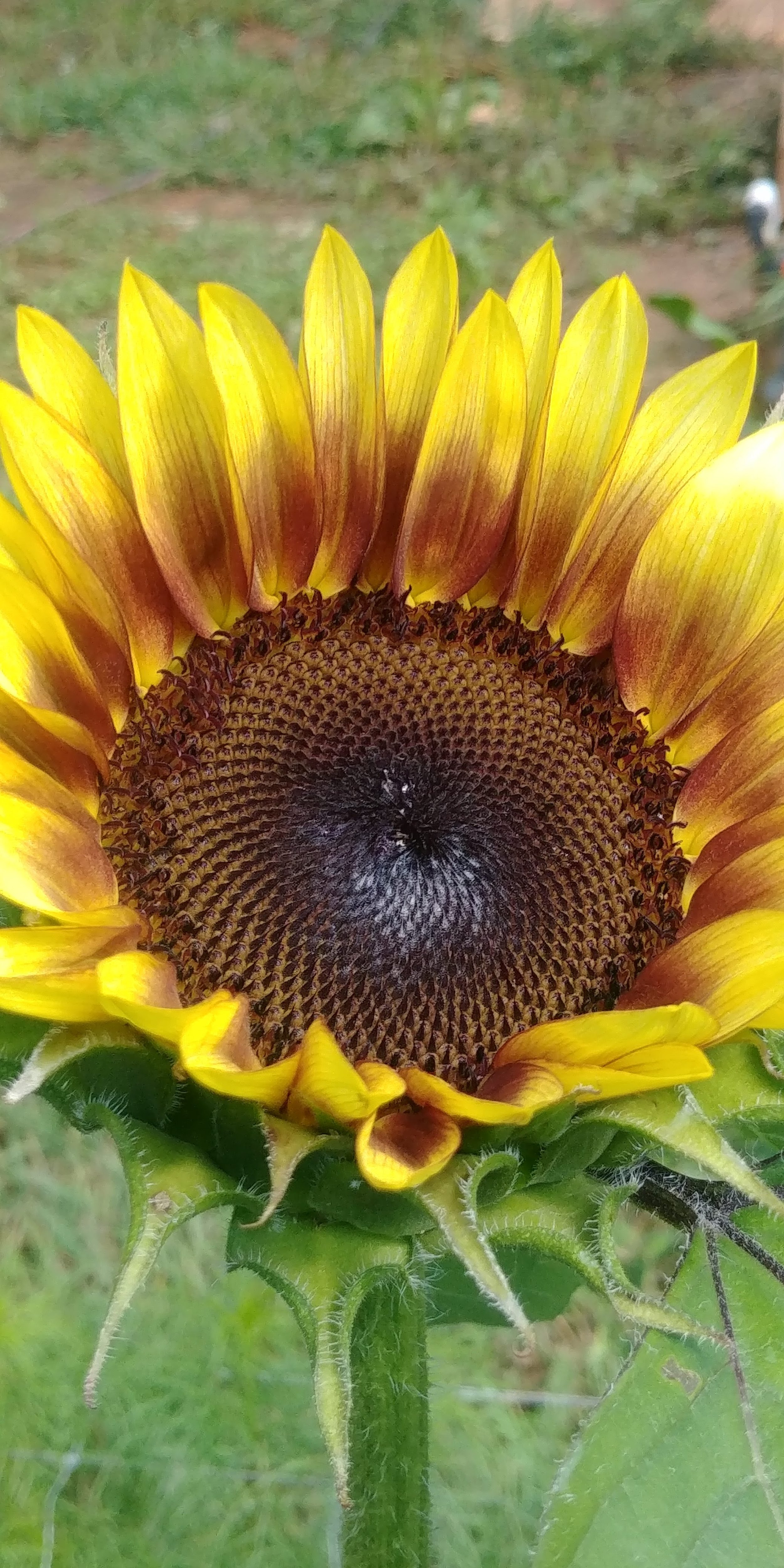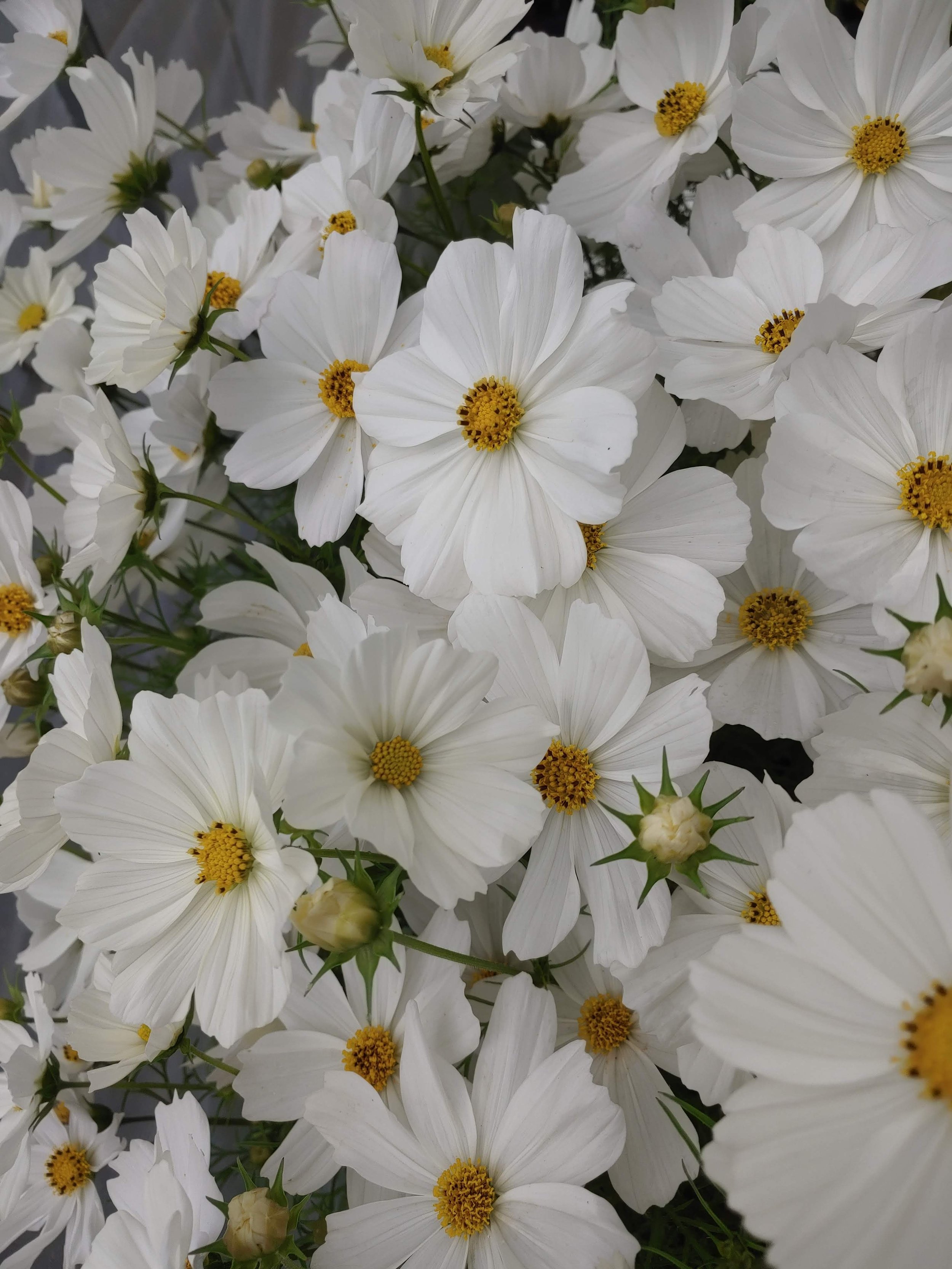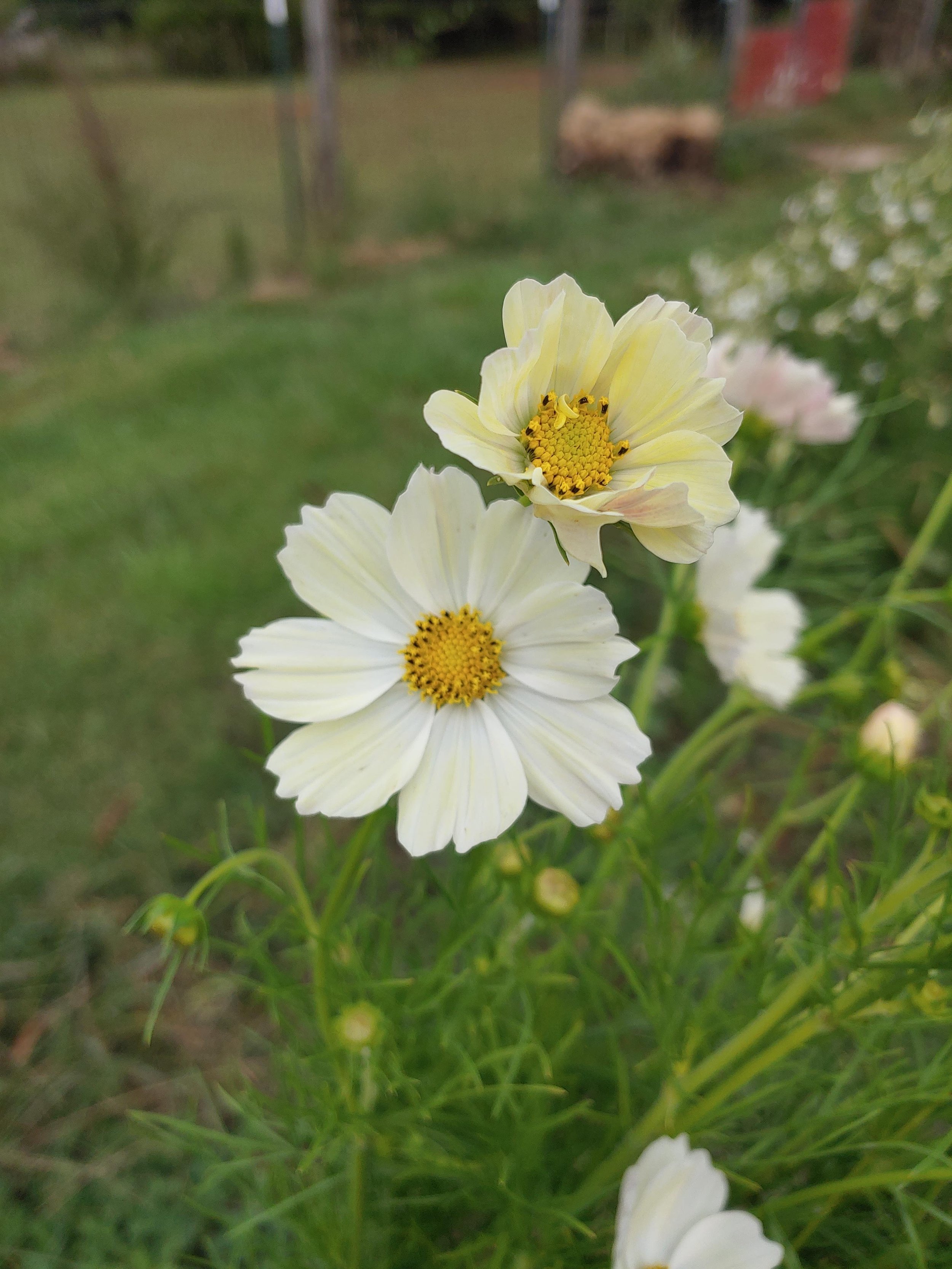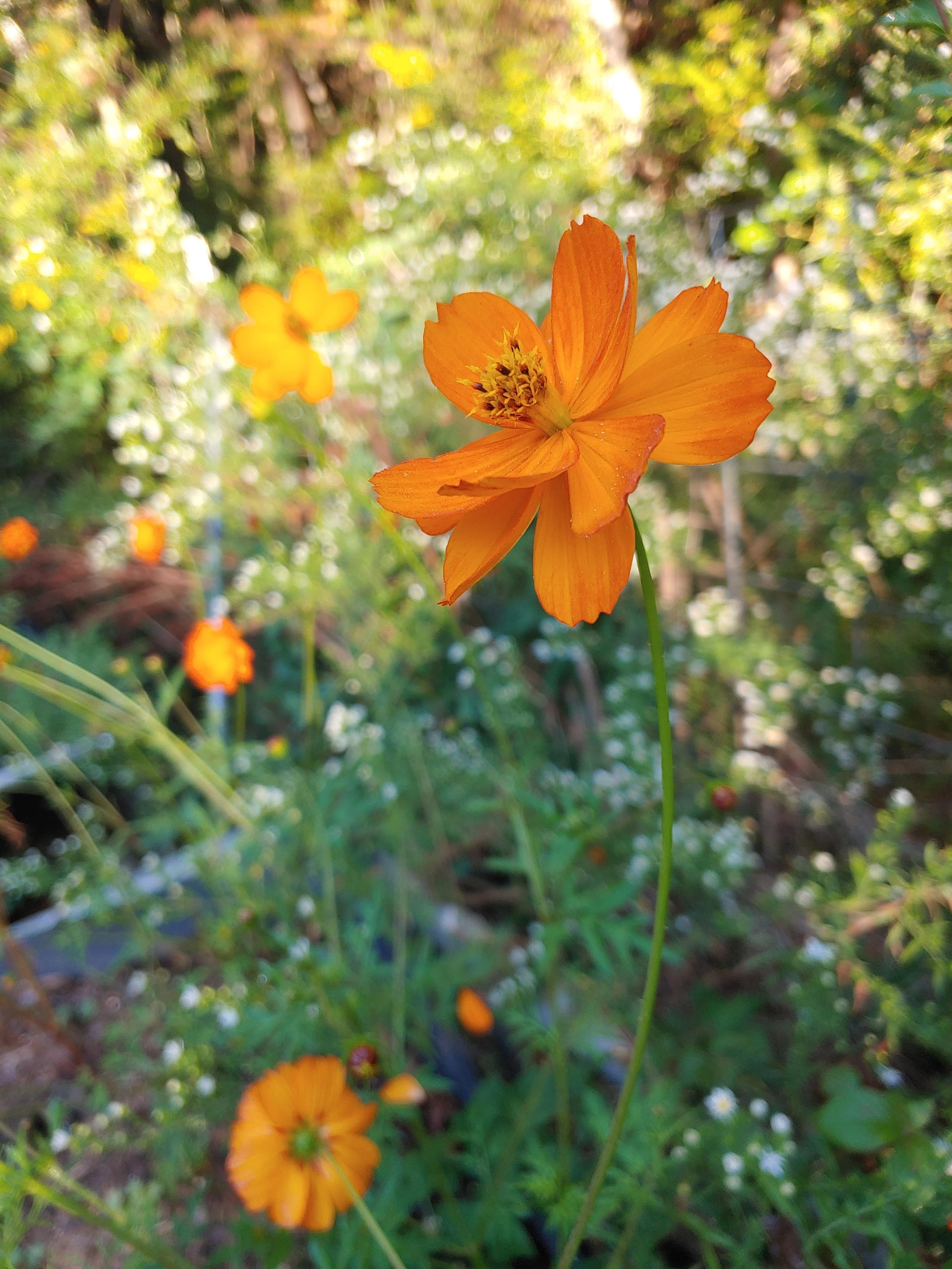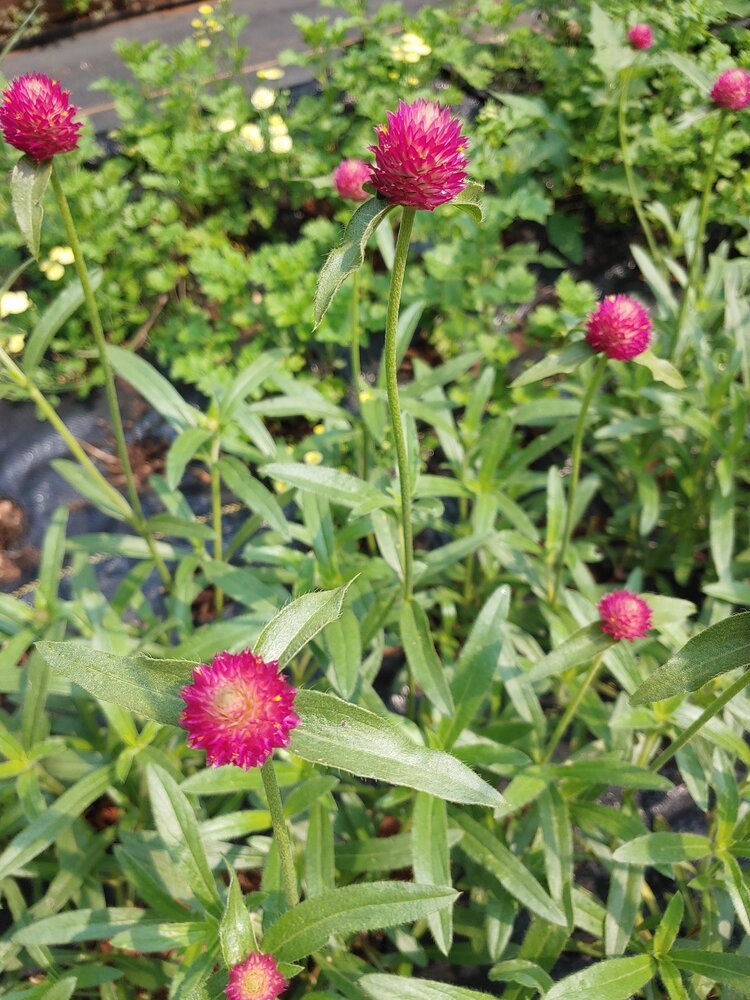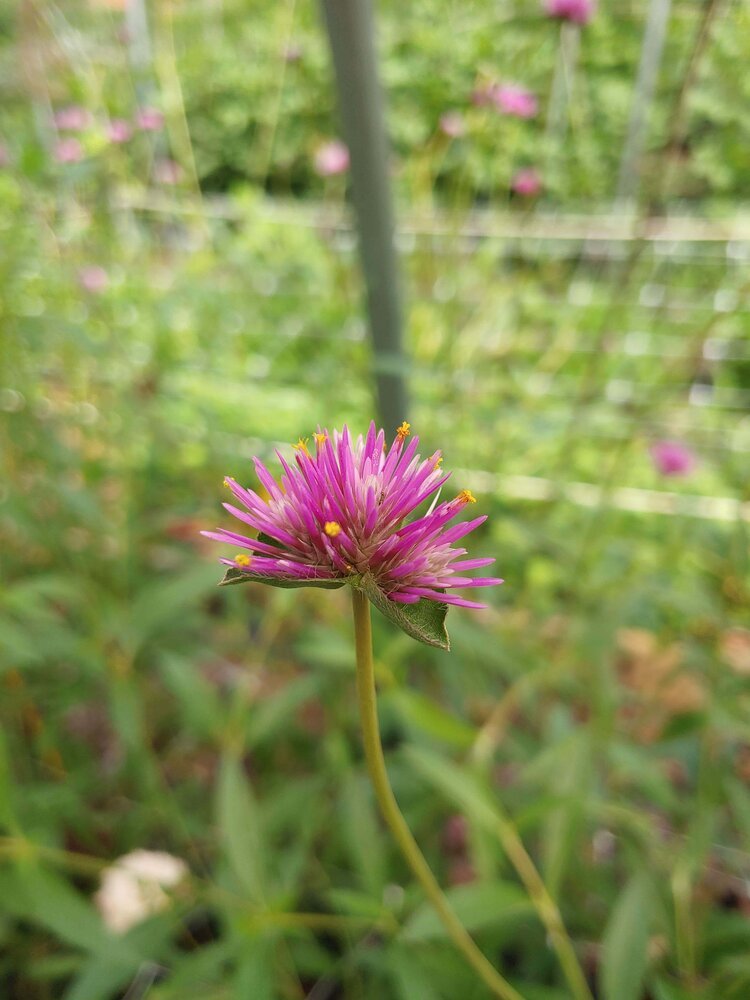Fantastic Annuals to add to your Dahlia Bouquets
Dahlias are amazing and gorgeous and make a beautiful bouquet on their own but sometimes you want a bit more. This is the first of a 2 part series on great flowers to add to your dahlias bouquets.
For reference, I’m zone 7b and our dahlias mostly bloom August through October so I’ll be steering the discussion toward fall bloomers. First up- we are going to talk annuals. Part 2 will be fall perennials.
The basis of a good bouquet is foliage so let’s start there.
Scented Geranium is one of my favorites! So many delicious scents - my favorites are Attar of Rose and Chocolate Mint. You want to make sure you are buying a variety that gets tall enough for cutting- minimum 2’. Scented Geranium is also perfect because it’s a self perpetuating annual. You buy your mother plant once and then take cuttings at the end of fall, root over the winter and you’ll have it again next year. If you are zone 8 or above, you can often over winter it as long. If you get a random really cold snap- throw some mulch around the crown and give it until mid May to wake back up in the Spring. It takes awhile some years— really needs warm soil to begin growing again.
You’ll need to experiment with harvest stage because the stems do need to be mature to avoid wilting in the vase. Stems usually require an overnight conditioning period in water to fully hydrate. If they are still wilty the next day, then they were cut too early. You are looking for the stem to be hard about 6” or so down from the top. It’s hard to describe in words so that’s why I say it’s a process you’ll need to experiment with until you get the feel for it.
Silver Shield Plectracanthus is another favorite. Scented Geranium and Silver Shield are two of my standby’s because with Scented Geranium you get a nice warm bright green shade and Silver Shield gives you a dramatic cool gray. This allows you to create different color schemes for your bouquets from just two foliage types.
Silver Shield is grown from seed. It’s a slow grower so you’ll want to start it around April and then get it planted outside once your soil is sufficiently warm- don’t put it into cool soil. It’ll take a while to get fully mature enough to cut but it times out perfectly with when dahlias are at their peak.
Once again, you’ll need to experiment with maturity stage when cutting- you are looking for the stem to be hardened off around 6” down from the tip. Condition overnight in a cool spot in water. Silver Shield holds up so long in the vase that it usually begins to root in the water. This also means that you can take cuttings in late fall and keep your plants going through the winter inside your house and replant next spring. I love self perpetuating plants!
Now let’s talk flowers!! A lot of the best additions to dahlia bouquets are quite common. But that’s okay because you don’t want to compete with the stars of the bouquet. Let’s talk types and varieties first and then culture because the growing process is pretty similar for most of these.
Cosmos are a personal favorite. Nothing like a fluttery butterfly like bloom hovering over the top of your bouquet. Their wispy nature adds movement which is important to keep your bouquet natural looking. Personally I prefer single cosmos but I know a lot of folks like the double types. My favorites are Sensation Purity (White Single), Double Click Cranberry, Rubenza (Single Burgundy), Kiiro (Small Single Yellow), and Sulphur Cosmos (the orange and yellow ones).
Celosia is my other favorite fall annual. Nothing like the texture of it in a bouquet. There are cut and come again types like Flamingo Feather and Flamingo Purple (these get big- give them space!). Cockscomb (the brain types) are mostly one and done. The chief series cockscomb can be pinched but a lot of the other varieties are single stem cuts. Totally worth it though in my opinion!! I also love the Celway series- these are the spiky types. They have a wonderful color range that works so well with dahlia hues— try the Terracotta, goes with everything in the Fall!
Zinnias- of course! Personally my favorites are the Oklahoma varieties- I prefer their smaller size and colors but the big Benary types work well too. The important thing with zinnias is to make sure you are getting a cutting variety (short bedding types won’t work for bouquets). One plus to the Benary types is that they have some disease resistance which can be handy for Fall growing in humid climates.
Nicotiana- I love nicotiana for so many reasons. It’s beautiful, smells amazing but my favorite thing- It attracts hummingbirds! I’ll grow it on my farm even if I never cut it again just to see the hummingbirds. I can’t tell you how many times I stop and watch them every fall! This past fall I tried the Bronze Queen variety— chocolately brown! It’s gorgeous with fall toned dahlias. I love the standard white too- great for cool toned bouquets.
Sunflowers- My favorites are pro cut gold (yellow with green center) and pro cut plum (beigey and plum/maroon shades). Space them closely (6”) so they don’t develop huge heads. You don’t want them to compete with your dahlias.
Peacock Orchids- This is a bulb grown flower that you plant in the late Spring to early Summer. You’d think something like this would be a perennial but I’ve never been able to get them to flower a second year. They’ll grown green leaves but never any flowers the second time around. They are an affordable bulb though so you can replant each year. Peacock Orchid is the common name- it’s in the gladiolus family (Acidanthera murielae).
Gomphrena- My favorite variety is Fireworks. It’s pink with small orangey yellow tufts that look like fireworks emanating form the globular flower.
Quick primer on growing hot season annuals: All the above flowers can be grown from seed (except the Peacock Orchids). Zinnias and Sunflowers will work well from a direct seed. All of them can be started as transplants and that’s what I would recommend. The important part of growing annuals for fall bouquets is timing. You want to have a fresh planting of these annuals for your fall bouquets. Don’t plant in spring and then expect them to still be looking nice in September. Plant a second succession!!
For Sunflowers, begin seeding in late June and then plant more seeds each week or every 2 weeks (this is for single stem varieties, branching types- plant every 3-4 weeks). You can continue planting sunflowers until you are about 60 days from your first frost date.
For Zinnias and cosmos, plant new transplants around the 3rd to 4th week of June. (You’ll need to start those transplants mid to late May).
For nicotiana, begin seed in early June. Seed takes a bit to get going. But once you transplant, nicotiana will bloom with 4-6 weeks. It’s a quick one! And will continue to bloom until frost if you keep cutting it.
Celosia- I would plant 2 successions to have enough for all of fall. Plant the multi stem types in late June and then the single stem types in early July and then again 2 weeks later.
Gomphrena- transplants need to be ready to go in the ground early June for an early Fall harvest.
So what are your favorite annuals to add to a dahlia bouquet?
Are you signed up for the Dahlia Lovers Newsletter so you’ll receive Part 2 of this series? Click Here!
For more info on warm season annuals, check out these past blog posts:
Planting in a Heat Wave
What to Plant and When
Tips for a Great Summer Cut Flower Garden
